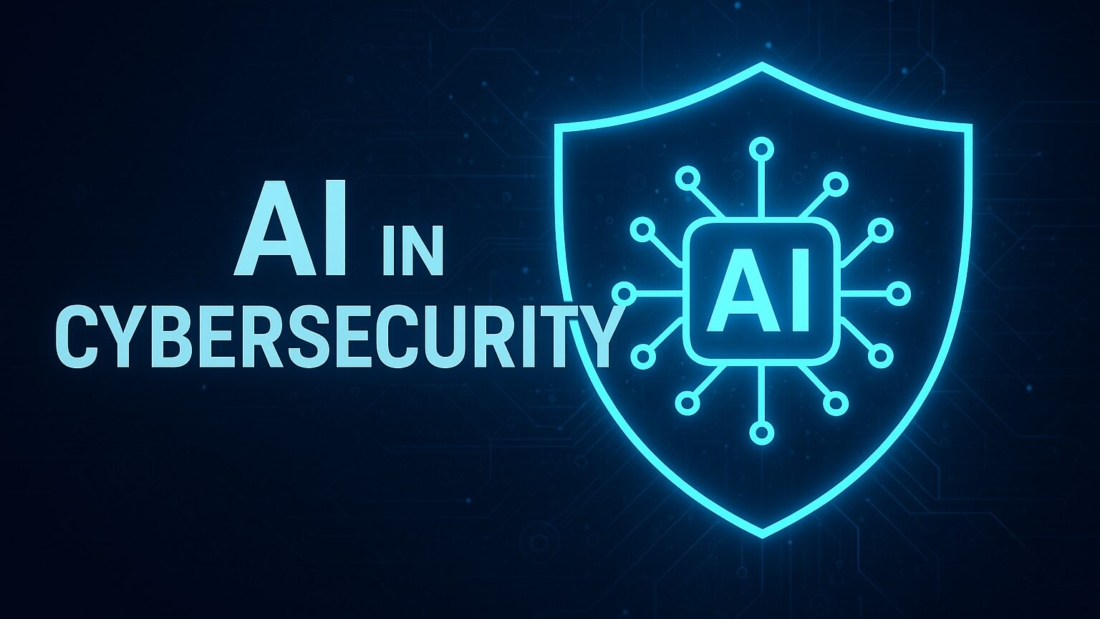The digital world is expanding faster than ever, and so are cyber threats. From data breaches to phishing scams, hackers are finding new ways to attack. That’s where Artificial Intelligence (AI) steps in — as the digital guardian we all need. AI in cybersecurity means using smart algorithms and machine learning to detect, prevent, and respond to cyber threats more efficiently than humans ever could.
Understanding Cybersecurity
Cybersecurity is all about protecting your systems, networks, and data from attacks. Common threats include malware, phishing, ransomware, and denial-of-service (DoS) attacks. With businesses and individuals constantly online, cybersecurity is now a must-have, not just an option.
Role of AI in Cybersecurity
AI adds intelligence to traditional security systems. Instead of waiting for an attack to happen, AI predicts and prevents it. Traditional methods rely heavily on manual updates and human analysis — both slow and limited. AI, however, can analyze massive amounts of data in seconds and detect patterns humans might miss.
AI-Powered Threat Detection
One of the biggest strengths of AI is its ability to detect threats in real-time. It studies user behavior and network patterns, then flags anything that looks suspicious.
Behavioral Analysis
AI systems learn what “normal” activity looks like. If something unusual happens — like a user logging in from a strange location or downloading too much data — AI raises an alert instantly.
Predictive Threat Intelligence
By studying past data and attack patterns, AI predicts potential future threats. Think of it as having a digital fortune teller that can foresee hacker moves before they even happen.
Machine Learning in Cybersecurity
Machine learning (ML), a subset of AI, allows systems to learn and improve over time without being explicitly programmed.
ML helps identify hidden threats by spotting patterns and anomalies across billions of data points. As cyber threats evolve, ML adapts — just like a human learning from experience, but much faster.
AI in Network Security
Networks are like highways for data — and AI acts as traffic police. It monitors traffic, detects anomalies like unauthorized access, and blocks harmful activity before it spreads. AI tools such as Cisco’s SecureX and Darktrace are already using this to keep networks clean and safe.
AI in Endpoint Security
Every device connected to your network — laptop, phone, or IoT device — is an endpoint and a potential entry point for hackers. AI-powered endpoint protection tools monitor these devices 24/7, detect malware, and even automatically isolate infected systems before damage occurs.
Use of AI in Data Protection
Data is the new gold, and AI ensures it stays protected. From identifying abnormal access attempts to detecting data breaches early, AI plays a crucial role.
AI-driven encryption systems make sure sensitive data is unreadable to unauthorized users, while also monitoring for leaks or theft.
Automation and Incident Response
When a cyber incident occurs, every second counts. AI automates incident response — detecting, analyzing, and fixing problems instantly. It also helps with automated patch management, ensuring software vulnerabilities are closed before hackers exploit them.
AI Against Phishing and Malware
Phishing emails can look extremely real these days, but AI can spot the difference.
Identifying Fake Emails
AI tools analyze sender behavior, wording, and links to catch fraudulent emails before they hit your inbox.
Malware Detection
AI scans and predicts malware behavior before it executes, stopping attacks before they start. Antivirus programs like McAfee and Norton now rely heavily on AI for this.
Benefits of AI in Cybersecurity
- Speed & Efficiency: AI can process data much faster than humans.
- Scalability: It can handle security for large networks effortlessly.
- Reduced Human Error: AI minimizes mistakes that human analysts might make under pressure.
- 24/7 Monitoring: No breaks, no fatigue — AI watches over systems continuously.
Challenges of AI in Cybersecurity
While AI is powerful, it’s not perfect.
- High Cost: Setting up AI-based systems can be expensive.
- Adversarial AI: Hackers can use AI too, creating a digital arms race.
- Skill Gap: There’s a shortage of cybersecurity experts trained in AI.
Future of AI in Cybersecurity
The future looks exciting — and secure. We’re moving toward AI-driven self-healing systems that can detect and repair vulnerabilities automatically. Combined with quantum computing, AI will soon make cyber defenses nearly unbreakable.
Real-World Examples
Big players like IBM, Microsoft, and Google already use AI to protect their infrastructures.
For example:
- IBM Watson identifies cyber threats with real-time intelligence.
- Darktrace uses AI to autonomously detect and respond to attacks.
- Google’s Chronicle analyzes massive amounts of security data to prevent breaches.
Conclusion
AI isn’t just the future of cybersecurity — it’s the present. From detecting threats faster to preventing attacks before they occur, AI has completely reshaped how we defend our digital spaces. As technology evolves, one thing’s for sure: the combination of human expertise and AI intelligence will create the strongest defense system the cyber world has ever seen.

